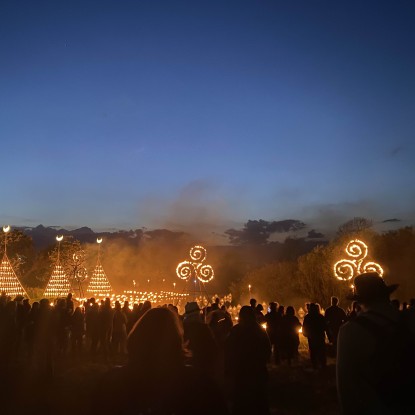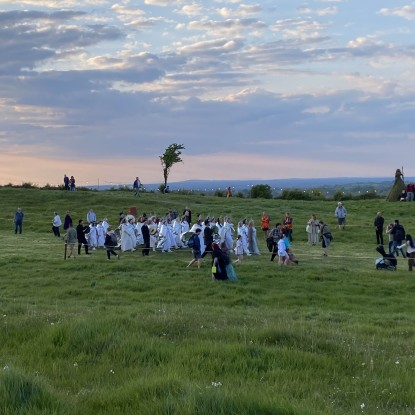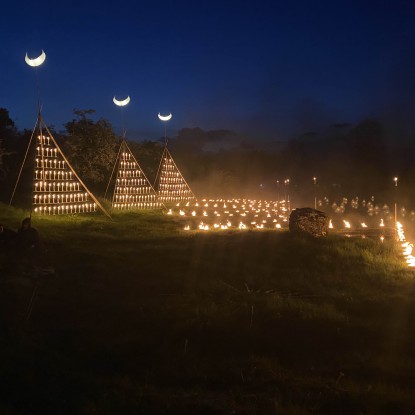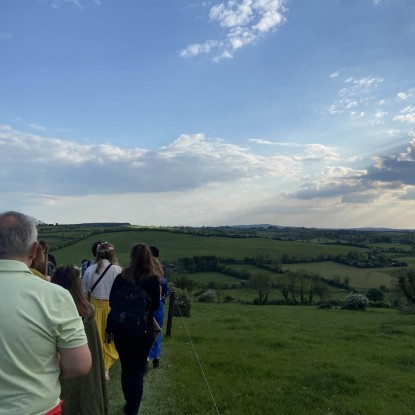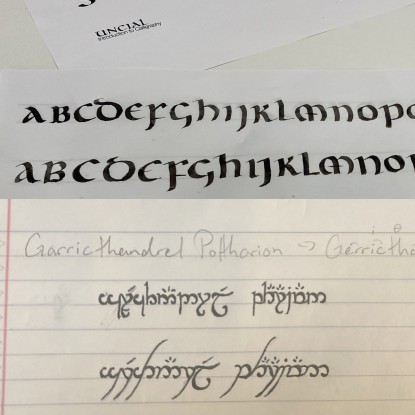A Writer Finding the Fantastic in Local History: Inspiration from Tradition
Ireland was a very easy choice for me to make as a fantasy writer. Elves, dwarves, and dragons are synonymous with the genre that I spend most of my time consuming and creating. That is because Celtic and Anglo-Saxon mythological archetypes are the backbone of Western fantasy. Fantasy, Western or not, is a genre baked in the traditions of our own world. It is a genre wholly dependent on being a parallel universe to our own, and this is all thanks to Professor Tolkien. He was a linguistic and literary scholar specializing in folklore of the British Isles. He mostly studied old English texts, but I learned in my courses at Maynooth University that Anglo-Saxon and Celtic history and culture often overlapped due to co-influence between the islands. Regardless, there is still a lot of Celtic influence in the series, especially among the Elves.
I am no stranger to Tolkienitis (aka Tolkien-syndrome or Worldbuilder’s disease), but at this point, I use it to my advantage. When you’re a scholar writing fantasy, it becomes very hard not to fall into the Tolkien trap, where you never write and only think about mythology, history, and culture. And because most of my studies at Maynooth University had to do with Irish history, archeology, and literature, every time I got to work on my writing, I ended up ill with Tolkien fever once more.
In this blog, I wanted to briefly touch on some of my favorite things I learned from Irish tradition that have impacted me.
Irish Language:
I took a course on the Irish Literary Tradition, under the assumption that I would be studying Irish stories, but that wasn’t the case (future Maynooth students beware: the course selection is often misleading! But take the courses you think will be interesting anyway, they are!). Rather than mythology and folklore, we learned about the creation of books and the origins of the Irish written language.
(Fun fact, Irish was the first Celtic language. It spread throughout the Isles, later evolving into Welsh, Scottish, Manx, Breton, and Cornish!) It was profoundly interesting and gave me some insight into how languages evolve over time. I’ve always been a lover of linguistics. Though I only speak English, despite my best efforts at German. Still, the evolution of language is an interest of mine, and I love conlangs (short for constructed language).
Elvish is one of my favorites, just aesthetically, because I don’t speak it. A handful of characters in the Tengwar writing system are from Gaelic script, and you can see the influence of Irish scribal shorthand on the vowels. And Sindarin itself uses similar linguistic sounds to Welsh. (Fun fact, in the Lord of the Rings movies, you can see Bilbo and Frodo using an altered version of the Gaelic script when writing There and Back Again.)
I was so excited to get to learn to write using the Celtic script in my class, which then sent me into a Tengwar hyperfixation. Here’s the name of one of my elf characters written in Sindarin next to my practice sheet!
Bealtaine at Uisneach:
Bealtaine is one of my favorite holidays. It’s on the pagan wheel of the year, and it traditionally marks the beginning of summer in Ireland. It was celebrated on May 1st, and post-Christianization, it turned into May Day. Sacred hills all over the island would be lit at the same time, symbolizing the collective emergence of the country from winter into summer. Today, the tradition continues, as it has for over two thousand years at Uisneach, which is traditionally considered the center of the country where laws would be made in meetings between the kingdoms before Tara became the political center of the country. Even then, Uisneach remained the spiritual center. On the highest point of the hill, you can see most of the island. Every year, the largest pyre would be lit for Bealtaine in the same place, and to this day, the tradition has continued, just on a different area of the hill for conservation’s sake.
I was led through the site on a tour by a “bard” who told us about the site’s history, various stories of kings, warriors, and saints, the religious significance of he site both pre- and post-Christianity, and the history of the holiday. My favorite part of the tour was when he led us to the supposed “resting place” of the goddess Ériu, the goddess of the land of Ireland. It was a giant boulder that had been sitting there for thousands of years. Throughout Irish History, people would take a pilgrimage to visit her stone and lay their hands on it, walk around it three times, and make a wish under the guidance of the goddess. I participated in the ritual myself with the others. The bard said that if you have Irish ancestors (because of the size of the island and low population for a long time), it is most likely that someone in your family had visited the site to do the ritual. I’m not so sure how true that statement was or if it was just to tug at the heartstrings of the global visitors, but it worked either way on me because I do have Irish in my family. I sat on the hill, overlooking the island around me, and thought about how incredible it was that I was there and how lucky I was to be the first person in my family back in Ireland in many years.
The night ended with the lighting of the bonfire, which was nothing less than a truly spiritual experience, seeing something so old continuing on despite the efforts of English colonialism. I got to think a lot about folklore, religion, and tradition thanks to our guide. I’m still reading into things about it even after my return.

